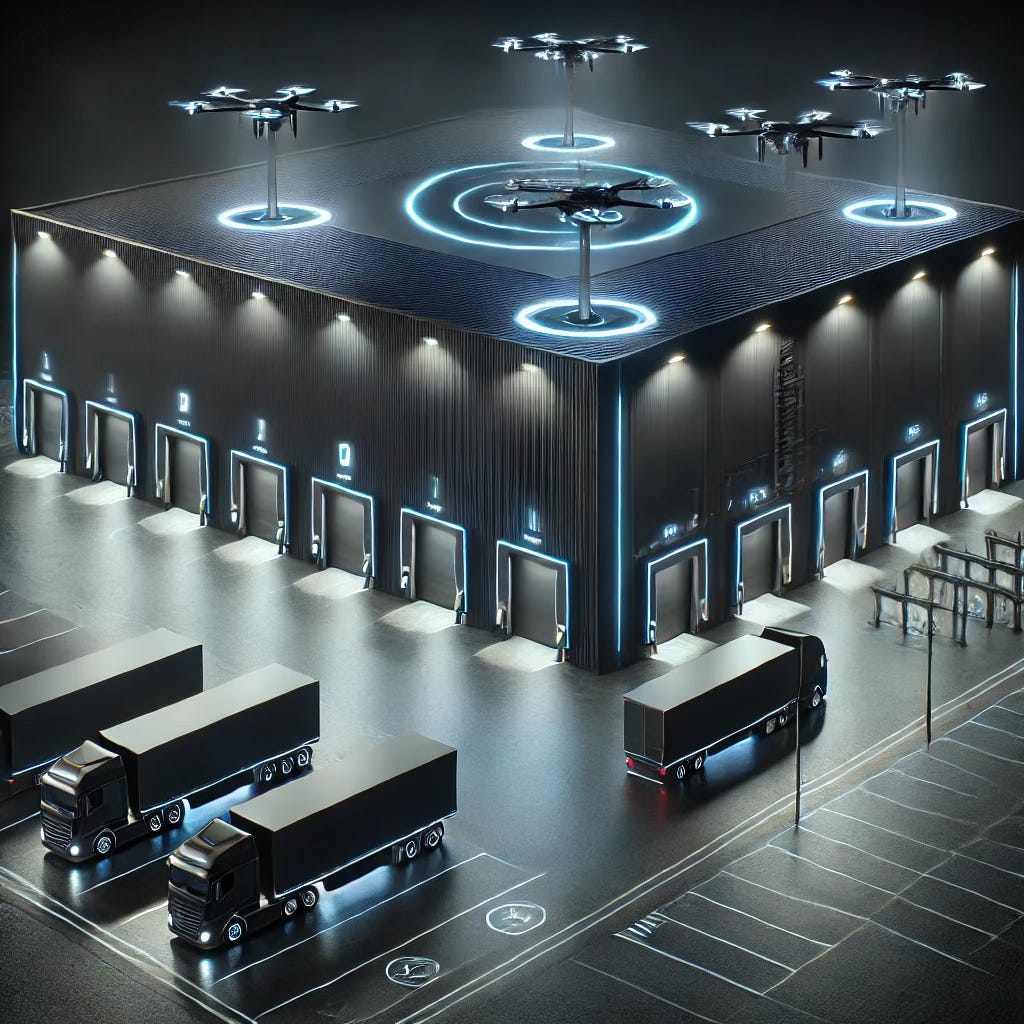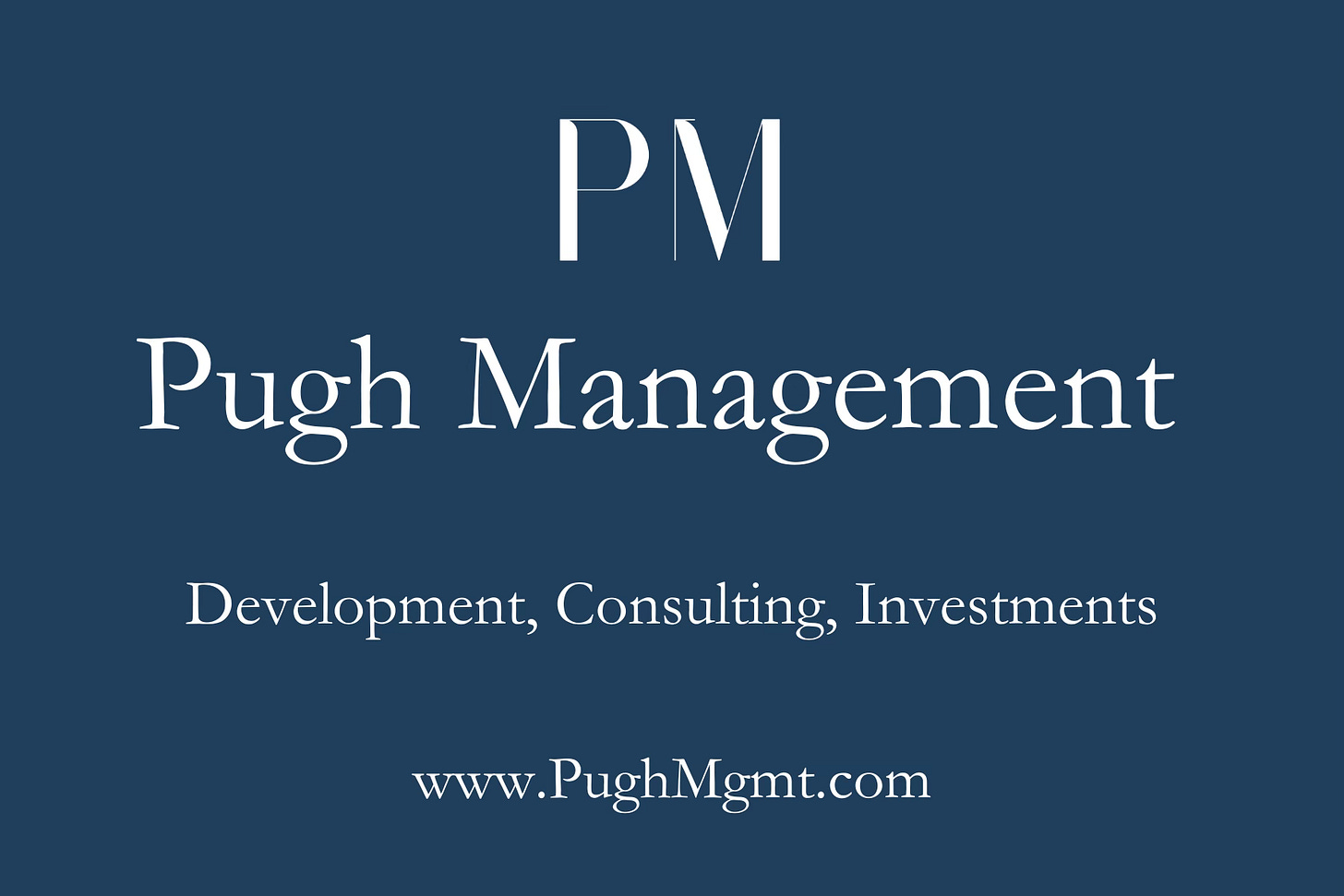Automation, On-Shoring, and the Future: Why Dark Warehouses Are the Next Big Industrial Revolution
How AI and Robotics Are Redefining Manufacturing, Slashing Costs, and Reshaping Industrial Real Estate
Recent Popular Posts
Welcome to The LineUp! Our weekly newsletter seeks to add value by engaging, connecting, and inspiring real estate operators, investors, and entrepreneurs. If you enjoy what you read, please like, share, and subscribe. Thank you for your support in growing this community! If you’d like to participate in our conversation join us on the Substack Chat here.
With the new administration's tariffs and Made in America policies, companies are being pushed to bring manufacturing and supply chains back to the U.S. But with high labor costs and workforce shortages, how can manufacturers and logistics companies stay competitive? There are many possible solutions, but all roads lead to one answer: dark warehouses.
Dark warehouses are fully autonomous facilities powered by AI, robotics, and IoT that eliminate reliance on human labor while increasing efficiency and reducing costs. Do I think they are going to happen tomorrow? No. Do I think they are where the industry will end-up? Yes.
I think it’s fun and important to explore the future of our industry. The trend of dark warehouses, like cloud-kitchens, or multi-generational housing is not going away. Let’s dig in.
What Are Dark Warehouses?
Imagine a warehouse where robots handle everything—from picking and packing to inventory management and facility maintenance—without any human intervention. These facilities require no lighting, climate control for human workers, or traditional break rooms and offices. Instead, they are optimized entirely for speed, accuracy, and operational efficiency.
As tariffs increase the cost of imported goods and reshoring ramps up, companies investing in automation-first industrial facilities will gain a critical advantage by minimizing overhead, reducing workforce costs, and improving production scalability.
Key Features of Dark Warehouses
1. AI-Driven Cost Optimization
At the heart of these facilities is artificial intelligence (AI), which enables real-time decision-making for inventory tracking, order processing, and predictive maintenance. AI-powered logistics allow companies to offset rising labor costs by streamlining operations and eliminating inefficiencies.
2. Robotics Replacing Human Labor
Autonomous warehouses rely on a mix of mobile robots, robotic arms, and humanoid robots that work 24/7 without breaks. These systems can:
Pick and pack goods at speeds far beyond human capability.
Operate in extreme temperatures or hazardous environments.
Reduce errors and maximize productivity without the need for large workforces.
3. Internet of Things (IoT) for Real-Time Operations
IoT-connected sensors provide real-time data on temperature, humidity, inventory levels, and machine performance. This allows AI systems to optimize energy use, prevent equipment failures, and improve overall efficiency, further lowering operational costs.
4. Energy Efficiency & Sustainability
With no human workers to accommodate, these facilities can prioritize sustainability by using solar panels, smart grids, and AI-controlled climate systems. Automated lighting and energy-efficient robotics further reduce utility expenses, a key advantage as companies adjust to rising domestic production costs.
5. Enhanced Cybersecurity & Supply Chain Protection
As supply chains become more localized, protecting intellectual property and operational data becomes critical. AI-driven security systems in dark warehouses monitor data networks, prevent cyber threats, and protect automation-driven supply chains from disruptions.
Why Dark Warehouses Are Essential for On-Shoring
1. Offset Rising Domestic Labor Costs
With rising wages and a shrinking labor pool, companies investing in automation-first industrial spaces can significantly reduce long-term labor expenses while maintaining productivity. It is inevitable, the new administration’s immigration policy will lead to higher domestic labor costs.
2. Keep Up with Manufacturing Growth
The administration’s America First policies and push for domestic manufacturing will drive demand for highly efficient, automated fulfillment centers that support on-shoring efforts. In recent manufacturing news, Taiwan Semiconductor (TSMC) just announced it will invest $100B in the US for semiconductor fabrication plants. Apple announced it will invest $500B in the US to build plants and factories.
3. Position the U.S. as a Leader in Advanced Logistics
Dark warehouses don’t just solve labor issues—they position the U.S. as a global leader in AI-driven logistics and industrial automation, allowing domestic companies to compete with low-cost international manufacturers.
4. Increase Industrial Real Estate Demand for Automation-Ready Spaces
As companies invest in reshoring, demand for automated fulfillment centers, AI-integrated warehouses, and robotics-powered industrial parks will surge. Investors who anticipate this shift and acquire automation-ready assets will gain a competitive edge.
Challenges & Considerations
Despite their advantages, dark warehouses come with hurdles:
High Initial Investment: Deploying AI and robotics requires significant upfront capital.
Regulatory & Policy Considerations: As automation grows, policymakers may introduce legislation affecting workforce transition and tax incentives.
Cybersecurity Risks: More automation means increased exposure to hacking and system failures that could disrupt supply chains.
The Bottom Line: Dark Warehouses Are the Future of U.S. Industrial Real Estate
As companies navigate tariffs, rising labor costs, and the push for domestic manufacturing, dark warehouses offer an immediate, scalable solution. These fully autonomous facilities will reshape industrial real estate, logistics, and supply chain efficiency in the coming years.
For investors, developers, and industrial operators, the time to position for automation-driven industrial assets is now.
Are you ready to invest in the future of industrial real estate? Let’s talk about how automation can redefine your portfolio. We are building a portfolio of urban industrial right now. Let’s talk.
Cheers,
John
Further Reading & Resources:
Automation & Manufacturing Trends – Automation World
On-Shoring & U.S. Manufacturing Growth – Morrissey Goodale
AI and Robotics in Industrial Warehousing – CBRE Industrial & Logistics Reports
Energy Demand & AI Expansion in Warehousing – Financial Times
Thank you for reading The Lineup. Do you have a topic on real estate development, entrepreneurship, urbanism or placemaking topic you'd like to see us cover in an upcoming post? We'd love to hear from you! We are also open to media partnerships and cross-posts. Reach out to us at info@pughmgmt.com. And don't forget to like, share, and subscribe!
If you like The LineUp, let’s connect: Join our chat conversation on Substack here. Plan a media partnership | 🪄Book a one-on-one intro call to learn more about Our Real Estate Consulting here | 📧 Subscribe at thelineupwithjohnpugh.substack.com
This post is sponsored by Pugh Management a leader in real estate investment and development. We primarily work with family offices and ultra-high net worth individuals to invest in real estate. To learn more reach out to us at info@pughmgmt.com or click this link to our website.







